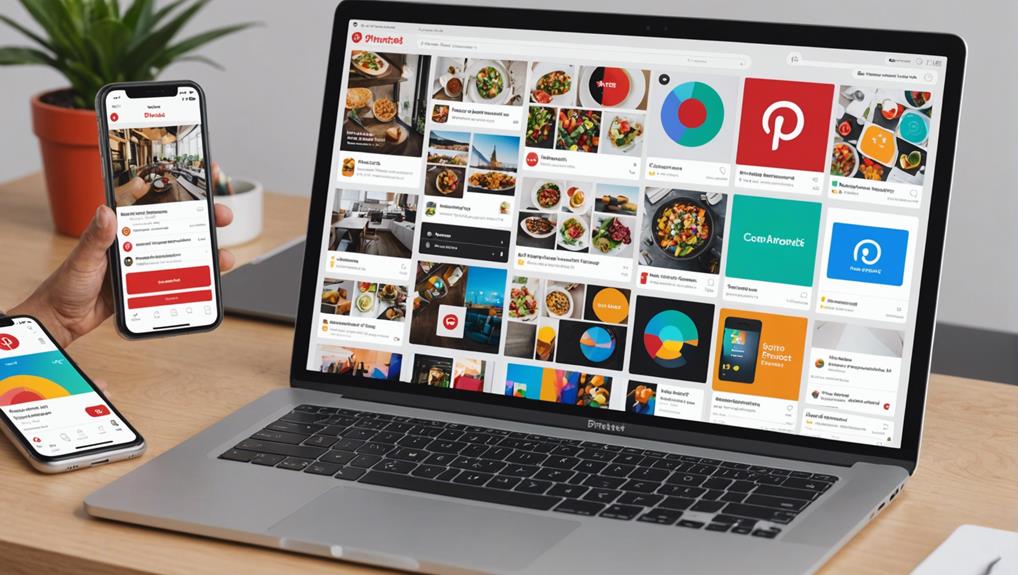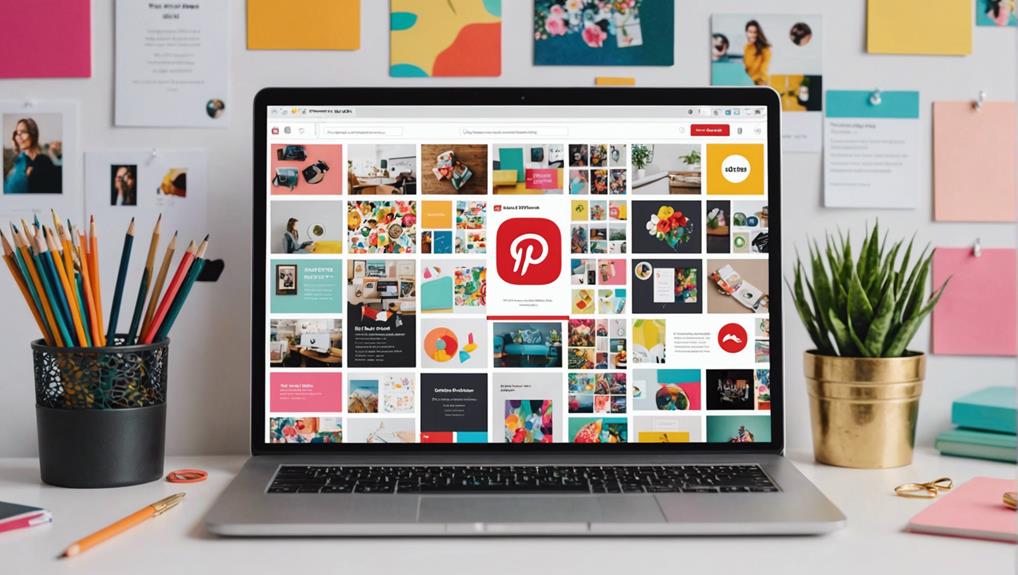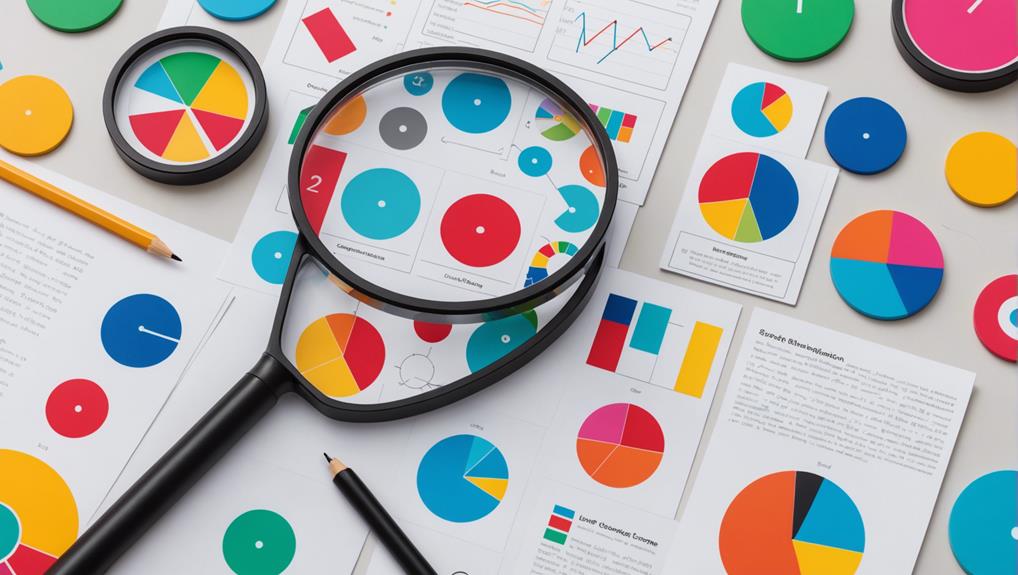Establishing a Pinterest content calendar is crucial for consistent growth. Begin by setting clear, measurable goals aligned with your broader marketing strategy. Identify your audience using Pinterest Analytics and tailor your content to their interests. Select content themes based on trending topics and niche relevance. Integrate effective keywords and plan seasonal content in advance. Utilize tools like Canva for designing eye-catching pins and scheduling platforms like Tailwind for consistent posting. Analyze performance data regularly to refine your strategy. Collaborate with influencers to boost engagement. Understanding these aspects guarantees that your efforts are impactful and streamlined. Discover deeper insights and optimize further for continuous growth.
Key Takeaways
- Plan and organize content using a content calendar to ensure consistent posting and audience engagement.
- Utilize Pinterest Trends Tool to align content with trending topics and seasonal events.
- Set measurable goals and track progress using Pinterest Analytics for data-driven adjustments.
- Design visually appealing pins with vibrant colors, compelling titles, and high-quality images.
- Use scheduling tools like Tailwind to automate pin posting and maintain a steady content flow.
Importance of a Content Calendar
Creating a content calendar is essential for planning and organizing your Pinterest strategy effectively, ensuring you post consistently and engage your audience for sustained growth. When you have a well-thought-out content strategy, a content calendar becomes your roadmap, guiding you through what to post and when. This helps in maintaining a consistent posting schedule, which is vital for keeping your audience engaged and coming back for more.
Without a content calendar, tracking performance metrics and making data-driven decisions becomes a challenging task. You'd miss out on opportunities to optimize your Pinterest strategy based on what works best. Planning ahead allows you to align your content with seasonal trends and relevant topics, increasing your visibility and relevance to your audience.
Moreover, if you're working with a team, a content calendar streamlines collaboration, ensuring everyone is on the same page regarding content creation and publishing. It's a strategic tool that not only helps you stay organized but also maximizes your efforts by allowing you to plan for long-term growth.
Understanding Pinterest Algorithms
Understanding Pinterest algorithms is essential for optimizing your content to achieve maximum visibility and engagement. The platform prioritizes fresh, high-quality content, making it important to stay updated on algorithm changes. By understanding these changes and how they impact content visibility, you can fine-tune your optimization strategies.
Pinterest ranks pins based on three primary factors: domain quality, pinner quality, and pin quality. Here's a quick breakdown:
| Factor | Description | Optimization Strategies |
|---|---|---|
| Domain Quality | Trustworthiness of your website's domain | Make sure your site is verified and reputable |
| Pinner Quality | Track record of user engagement and activity | Maintain consistent posting and interaction |
| Pin Quality | Relevance and visual appeal of individual pins | Create high-quality, engaging pins |
Consistent posting and engagement are important. Regularly pinning content and interacting with your audience can positively influence your pin ranking. Utilize the Pinterest Trends Tool to identify trending topics and align your content accordingly.
Setting Clear Goals
To harness the full potential of your Pinterest content calendar, start by setting clear, measurable goals that align with your overall marketing strategy. Begin by defining metrics that matter most to your business, such as increasing monthly viewers, click-through rates, or pin saves. These specific objectives will guide your content creation strategy and keep your efforts focused.
Setting essential goals is vital. You don't want to aim too high and miss the mark or set the bar too low and not challenge your team. Instead, choose realistic targets that push your capabilities while remaining attainable. Align these goals with broader marketing objectives, like promoting products, driving sales, or increasing brand awareness on Pinterest.
Tracking progress is important for measuring success. Regularly monitor key performance indicators (KPIs) to see if you're on track. Use Pinterest Analytics to gather data and adjust your strategy as needed. This data-driven approach ensures you're not just creating content but making impactful decisions that lead to consistent growth.
Identifying Your Audience
To effectively identify your audience on Pinterest, start by leveraging demographic research tools to understand who they are.
Use Pinterest analytics to analyze their behavior, interests, and engagement patterns.
With this data, you can develop targeted content strategies that resonate and drive consistent growth.
Demographic Research Tools
Leveraging Pinterest Analytics can give you a treasure trove of demographic data to fine-tune your content strategy and reach the right audience. Start with audience segmentation to break down your followers by age, gender, location, and interests. This segmentation allows for precise content customization, ensuring your pins resonate deeply with distinct groups.
Pinterest Audience Insights goes further by offering demographic insights into your audience's interests, the devices they use, and their shopping behaviors. With this data, you can create highly targeted campaigns that address the specific needs and preferences of each segment.
For example, if you notice a significant portion of your audience is interested in home decor and primarily uses mobile devices, you can tailor your pins to feature mobile-friendly design tips and decor ideas.
By understanding these demographic insights, you'll be better equipped to tailor your content calendar. This means scheduling pins that align with your audience's peak engagement times and preferred content types. The result? A more engaged audience and consistent growth on Pinterest.
Use these demographic research tools to optimize your content strategy, ensuring every pin you post is a step towards better engagement and growth.
Audience Behavior Analysis
Analyzing your audience's behavior on Pinterest is key to crafting a content calendar that drives engagement and growth. To identify your audience effectively, you need to investigate their demographics, interests, and content preferences. Start by leveraging Pinterest Analytics to track user interactions with your Pins. Focus on metrics like saves, clicks, and engagement rates to gain insights into your audience's pinning habits.
Here are actionable steps to analyze user behavior:
- Examine Engagement Metrics: Look at which Pins get the most saves and clicks to understand what resonates with your audience.
- Identify Content Preferences: Analyze the types of content that get the highest engagement, whether it's infographics, DIY guides, or lifestyle images.
- Track User Behavior Patterns: Notice when your audience is most active and tailor your posting schedule to maximize visibility.
- Segment Your Audience: Use demographic data to segment your audience into smaller groups for more targeted analysis.
Targeted Content Strategies
Pinpointing your target audience on Pinterest is the cornerstone of developing a strategic and data-driven content plan that fuels consistent growth. By focusing on content personalization, you can tailor your pins to match the preferences and interests of your audience. Understanding their demographics, interests, and behaviors allows you to create content that truly resonates, fostering greater audience engagement.
To begin, leverage Pinterest analytics to gain insights into your audience's engagement and preferences. This data will help you craft targeted messaging that speaks directly to your audience's needs and desires. By aligning your content with user preferences, you'll see higher engagement and conversion rates. The key is to continuously refine your content strategies based on the data you collect.
For instance, if analytics reveal that your audience is particularly interested in DIY crafts, prioritize creating and pinning content that caters to this interest. This targeted approach not only improves audience engagement but also builds a loyal following over time.
Choosing Content Themes
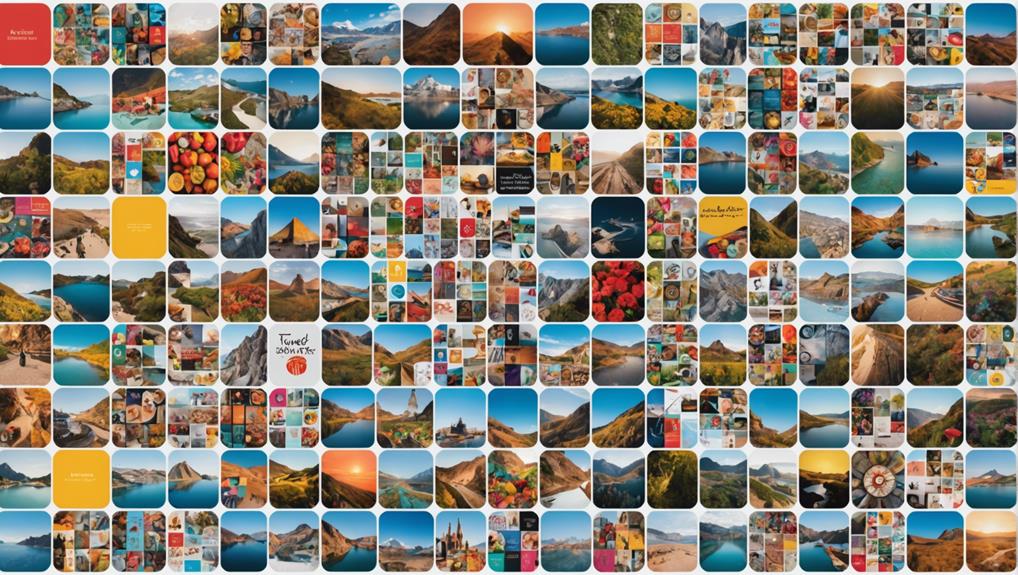
To choose content themes that resonate with your audience, start by exploring their interests and preferences through data-driven insights. Utilize tools like Pinterest Trends to identify what's trending and align those topics with your niche relevance.
By focusing on content diversity, you can cater to different aspects of your audience's needs, thereby boosting audience engagement and guaranteeing consistent growth.
Here are some strategic steps to guide your theme selection process:
- Analyze Data: Use analytics to understand which types of content your audience interacts with the most.
- Trending Topics: Incorporate current trends that are relevant to your niche. This keeps your content fresh and engaging.
- Business Goals: Align your content themes with your overall business and marketing objectives to ensure cohesive messaging.
- Content Variety: Diversify your themes to cover various interests within your target audience, from how-to guides to inspirational posts.
Researching Keywords
Maximize the full potential of your Pinterest strategy by delving into keyword research to uncover terms your audience actively searches for. Start by using tools like Pinterest Trends to discover trending keywords and topics. This data-driven approach allows you to stay ahead of the curve and create content that resonates with your audience.
Incorporate long-tail keywords to target specific niches, ensuring your pins reach the right people. These detailed phrases improve search visibility and can greatly boost engagement. For example, instead of using 'summer recipes,' go for 'quick summer recipes for kids.'
Competitive analysis is essential. Look at what top-performing profiles in your niche are doing. Identify the keywords they're using and see how you can integrate them into your strategy without copying. This helps you understand what works and adapt it to your unique brand voice.
Don't forget about seasonal keywords. These terms can drive substantial traffic during certain times of the year. Think about holidays, back-to-school periods, or summer vacations. Analyzing keyword performance will help you optimize pin descriptions and titles, making your content more discoverable and engaging.
Planning Seasonal Content

Start by identifying key seasonal trends to guarantee your Pinterest content resonates with users' interests and search behaviors.
Use a monthly planning guide to schedule posts around holidays and events, maximizing engagement and traffic.
This strategic approach will keep your content timely, relevant, and ahead of the competition.
Key Seasonal Trends
Harnessing key seasonal trends on Pinterest can greatly enhance your content strategy and drive consistent growth. By planning and tailoring your seasonal content, you can notably boost audience engagement and attract more traffic to your profile. Pinterest trends, such as holidays, events, and themes, provide invaluable insights for shaping your content strategy. Leveraging these trends not only improves brand visibility but also guarantees your pins resonate with your audience.
To effectively incorporate seasonal trends into your Pinterest content calendar, consider these strategic steps:
- Identify Key Dates: Use the Pinterest Trends Tool to pinpoint popular seasonal events and themes.
- Plan Ahead: Create and schedule your seasonal content well in advance to stay ahead of the curve.
- Tailor Content: Customize your pins to align with specific seasonal trends, making them more appealing and relevant to your audience.
- Analyze Performance: Regularly review the performance of your seasonal content and adjust your strategy based on what resonates most with your audience.
Monthly Planning Guide
Developing a monthly planning guide for seasonal content guarantees you stay ahead of trends and consistently engage your Pinterest audience. To start, align your monthly schedule with key holidays and events that resonate with your target demographic. This strategic approach assures your pins are timely and relevant, helping you capitalize on heightened user interest.
Utilize tools like Pinterest Trends to pinpoint popular seasonal topics and keywords. This data-driven method lets you create content that's not only engaging but also optimized for search visibility. By planning seasonal content ahead of time, you secure a steady stream of fresh pins, keeping your audience engaged and your profile active.
Incorporate holiday promotions and event planning into your monthly schedule. Whether it's Valentine's Day, Halloween, or summer vacations, tailor your pins to these occasions. This targeted approach can significantly enhance your engagement rates and drive traffic to your profile during peak times.
Leveraging Pinterest Analytics
By diving into Pinterest analytics, you can uncover valuable insights that inform and enhance your content strategy for consistent growth. Using Pinterest analytics allows you to optimize your content by understanding what works best.
Dive deep into performance tracking to see which pins, boards, and trends resonate most with your audience.
Here's how you can leverage Pinterest analytics effectively:
- Track Impressions and Engagements: Monitor how many times your pins are seen and interacted with to gauge their popularity.
- Analyze Outbound Clicks: Understand which pins drive traffic to your website, helping you refine your content to boost conversions.
- Audience Insights: Gain detailed knowledge about your audience's preferences and behaviors to tailor your content accordingly.
- Pinterest Trends Tool: Use this feature to identify popular topics and keywords, ensuring your content aligns with current search trends.
Designing Eye-Catching Pins

To create pins that capture attention and drive engagement, start by choosing vibrant color schemes that stand out on Pinterest's feed.
Craft compelling pin titles that not only inform but also entice users to click.
Additionally, always use high-quality images to enhance the visual appeal and credibility of your content.
Choosing Vibrant Color Schemes
Leveraging vibrant color schemes in your Pinterest pins can triple engagement rates, making your content more appealing and clickable. Utilizing bold, contrasting colors not only grabs attention but also encourages users to save or click on your pins.
Here's how you can strategically use color to boost your Pinterest presence:
- Color Psychology: Understand the impact of colors on emotions. Bright hues like red, orange, and yellow evoke excitement and urgency, driving more actions.
- Brand Recognition: Consistency is key. Use a specific color palette to create cohesion across your pins, making your content instantly recognizable.
- Contrast for Visibility: High contrast between background and text guarantees your pins stand out in crowded feeds, enhancing visibility and clicks.
- Emotional Connection: Colors can set the tone of your message. Cool tones like blue and green can evoke calmness, while warm tones energize the viewer.
Crafting Compelling Pin Titles
Crafting compelling pin titles can greatly boost your Pinterest engagement, driving a 150% increase in click-through rates when done right. To achieve this, focus on pin title optimization by using clear and concise language. Keywords are essential; they make your pins more discoverable in search results and feeds. Start by identifying high-traffic keywords related to your content and seamlessly integrating them into your titles.
Creative wording techniques can set your pins apart. Incorporate numbers, questions, and emotional triggers to capture attention. For instance, a title like '10 Must-Have Kitchen Gadgets' uses numbers to promise value, while 'Are You Making These Common Decorating Mistakes?' poses a question that sparks curiosity. Emotional triggers, such as 'Life-Changing Tips for Busy Moms,' can evoke a strong response and drive engagement.
To maximize the effectiveness of your pins, pair your optimized titles with an eye-catching design. A strong title grabs initial attention and compels users to click through to your content. Remember, the goal is to create a seamless blend of visual appeal and strategic wording.
Utilizing High-Quality Images
High-quality images can greatly enhance your Pinterest engagement, resulting in a 67% increase in clicks and a 94% surge in image views. To maximize this, focus on image optimization and visual storytelling when designing your pins.
First, use vertical pins with an aspect ratio of 2:3 or 1:2.1. These dimensions perform best on Pinterest and guarantee your content stands out.
Next, harness the power of color psychology. Pins with multiple dominant colors receive 3.25 times more saves than those with single dominant colors. Incorporate design trends that align with your brand to make your pins visually appealing.
Consider these strategies:
- Minimal background space: Clear focal points catch attention faster.
- High-resolution images: Make sure your photos are crisp and clear.
- Canva's design tools: Utilize templates and design resources to create polished pins.
- Consistent branding: Maintain a cohesive look across all your pins.
Lastly, remember that compelling visuals tell a story. Use images that evoke emotions and align with your brand message.
Scheduling Pins Consistently
To maximize your reach on Pinterest, consistently scheduling pins is crucial for maintaining visibility and engagement. Pinning frequency directly impacts how often your content appears in users' feeds. Aim to pin multiple times a day, ideally between 10-15 pins, to keep your account active.
Ideal timing is also critical; research suggests that evenings and weekends yield higher engagement rates, but you'll want to analyze your audience's behavior to fine-tune your schedule.
Consistent scheduling not only helps in audience engagement but also aligns with Pinterest's algorithm, which favors accounts that post regularly. This practice enhances your reach, making your pins more likely to be seen by a broader audience. By planning your pinning strategy in advance, you can ensure a steady flow of content that resonates with your followers.
Using scheduling tools like Tailwind or Pinterest's native scheduler allows for strategic planning. You can batch-create pins and set them to post at strategic times, making your content calendar more manageable. This approach not only saves time but also drives more traffic to your website or blog, boosting your overall performance on the platform.
Consistency is key—keep your audience engaged by maintaining a regular pinning schedule.
Monitoring Pin Performance
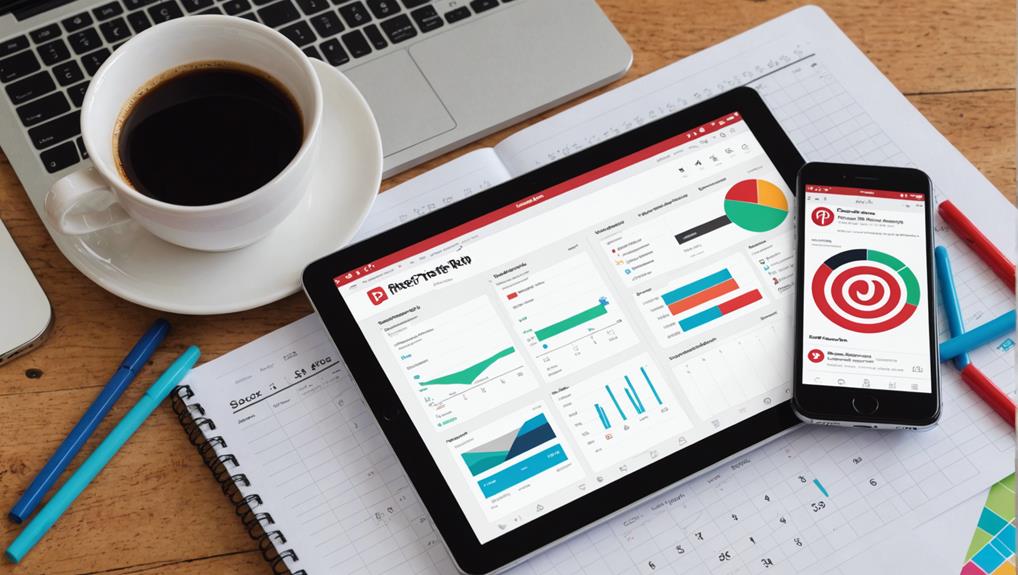
To guarantee your Pinterest content calendar drives consistent growth, start by analyzing your engagement metrics, such as saves, clicks, and overall engagement rates.
Identify your top-performing pins to understand what resonates with your audience. Use these insights to make data-driven adjustments to your content strategy, maximizing traffic and engagement.
Analyzing Engagement Metrics
Consistently tracking metrics like outbound clicks, saves, and engagement rates is vital for understanding and optimizing your Pinterest strategy. Engagement analysis allows you to grasp which pins truly resonate with your audience. By monitoring pin performance, you can make data-driven decisions that enhance your content strategy.
Using Pinterest Analytics is your first step. It provides a detailed view of how your pins perform, enabling you to tailor content based on what captivates your followers the most. Here are key metrics to focus on:
- Outbound Clicks: Indicate how effectively your pins drive traffic to your website.
- Saves: Show how often users save your pins to their boards, reflecting content value.
- Engagement Rates: Measure the overall interaction with your pins, including clicks, saves, and comments.
- Impressions: Track how often your pins appear in search results or feeds, offering insights into visibility.
Regularly reviewing this performance data is essential. It guides your content calendar planning, ensuring that you consistently produce high-quality pins that engage your audience.
Identifying Top Performers
Identify top-performing pins by meticulously analyzing metrics like saves, clicks, and engagement rates to uncover what truly resonates with your audience. Start by diving into Pinterest Analytics to monitor pin performance over time. Focus on key indicators such as impressions, close-ups, and click rates. These metrics give you a thorough view of how well your pins are doing.
To understand what drives engagement, look at which pins are being saved and clicked on the most. High engagement rates often indicate that the content is striking a chord with users. When you identify these top performers, you can glean valuable insights into the types of content, visuals, and topics that your audience prefers.
Once you've identified your top-performing pins, adjust your content strategy accordingly. Replicate the elements that work—be it the style of the imagery, the type of content, or the timing of your posts. By doing so, you'll maximize growth and make sure that your Pinterest content calendar is populated with high-impact content.
Monitoring pin performance isn't just about numbers; it's about understanding your audience and consistently delivering value through strategic, data-driven decisions.
Adapting Your Strategy
Analyzing your Pinterest analytics is crucial for adapting your strategy to ensure continuous growth and engagement. To stay ahead, you'll need to focus on content optimization and strategy evolution.
Start by utilizing the Pinterest Trends Tool to gain insights into what's currently popular. This will help you tailor your content based on audience interests and engagement rates.
Here are some steps to guide you:
- Adjust Content Themes: Align your content with trending topics on Pinterest to capture more attention.
- Revise Content Formats: Experiment with different formats such as videos, infographics, and carousel pins to see what resonates most.
- Update Content Calendar: Regularly revise your calendar to keep it relevant and engaging, ensuring it reflects the latest trends and analytics insights.
- Tailor Based on Analytics: Analyze which pins are performing well and replicate their success by creating similar content.
Collaborating With Influencers

Partnering with influencers on Pinterest can significantly boost your brand's visibility and engagement, driving substantial traffic to your content. Influencer collaborations aren't just about increasing followers; they're strategic moves to enhance your brand exposure.
When you collaborate with influencers who align with your brand values, you tap into their established audiences, which can lead to significant increases in traffic to your profile.
Engaging partnerships with influencers foster authentic connections, making your content more relatable and shareable. This authenticity often translates into higher engagement rates and more conversions.
Influencers provide unique and creative content that can set your Pinterest profile apart from the competition, making your pins more attractive and engaging.
Moreover, leveraging these influencer partnerships can result in more shares and saves, further expanding your reach. When an influencer shares your content, it's likely to be saved and repinned by their followers, creating a ripple effect of visibility.
This cascading effect not only increases traffic but also enhances brand credibility and trust. By strategically planning these collaborations, you establish a steady stream of high-quality content, driving consistent growth and solidifying your presence on Pinterest.
Utilizing Pinterest Tools
To further enhance your Pinterest strategy, leveraging tools like Canva can streamline your content creation and scheduling process, guaranteeing consistent and high-quality pinning. Canva is a powerhouse for efficiently and effectively creating Pinterest pins. Its intuitive design features allow you to craft visually compelling pins that optimize click-through rates, a critical factor for driving engagement.
Utilizing Canva features such as batch creation and organizing design assets in folders can greatly boost your content calendar efficiency. With Canva's paid version, you can even schedule pins directly from the platform, making it easier to maintain a consistent posting schedule. This seamless integration saves time and ensures your pins are published at ideal times for maximum visibility.
Here are some key benefits of using Canva for your Pinterest strategy:
- Batch creation: Create multiple pins in one session, ensuring a steady flow of content.
- Organized assets: Keep your design elements neatly organized in folders for quick access.
- Optimized designs: Use Canva's features to design pins that drive higher click-through rates.
- Scheduling capabilities: Schedule pins directly from Canva to streamline your workflow.
Repurposing Content
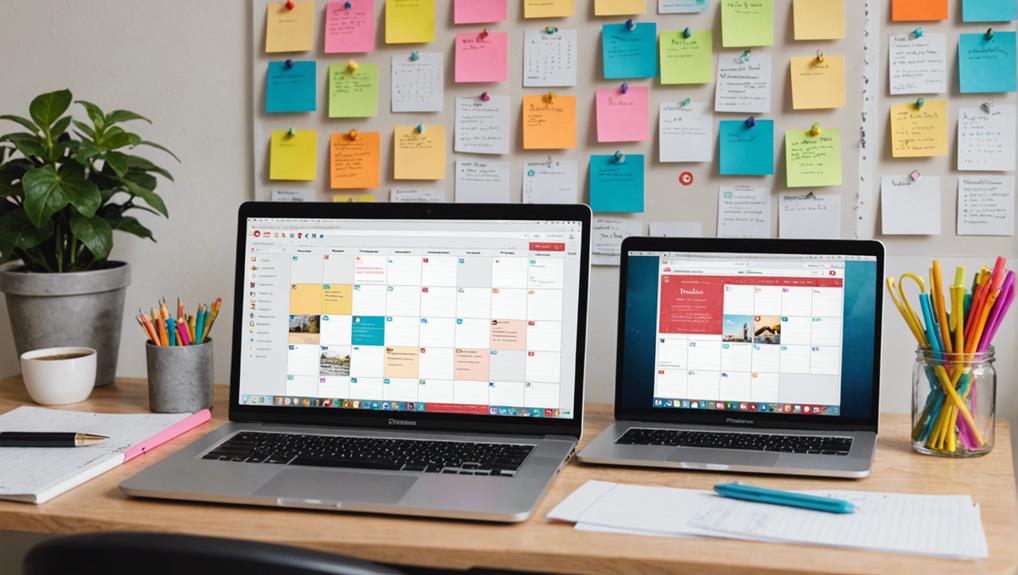
Transform your existing content into high-performing Pinterest pins to save time and amplify your reach. Repurposing content is a strategic way to maximize your reach and keep your Pinterest profile active without constantly creating new material.
Start by identifying high-value content like blog posts, podcast episodes, or videos. These can be transformed into eye-catching pins with compelling visuals and optimized keywords.
One of the best content repurposing tips is to break down a long-form blog post into several pins, each highlighting a key point. This not only provides more content but also makes your pins more digestible.
For podcasts, consider creating quote graphics or summary infographics. Videos can be segmented into short clips or still images with overlay text.
Pinterest growth strategies hinge on maintaining a consistent presence, and repurposing content helps you do just that. By regularly posting optimized pins, you drive more traffic to your site and engage a larger audience.
Focus on visual content creation to make your pins stand out. Use high-quality images, clear text overlays, and cohesive color schemes to make sure your pins are both attractive and informative.
Frequently Asked Questions
How Do You Create a Successful Calendar Content?
To create a successful calendar, brainstorm content themes quarterly, decide on a consistent posting frequency, and use Pinterest analytics. Incorporate tools like Google Calendar or Trello to stay organized and adjust strategy based on data.
What Should a Content Calendar Include?
For your content calendar, include content themes, posting frequency, dates, titles, and keywords. Track performance using analytics. Collaborate with your team and adjust based on trends to guarantee strategic, data-driven, and engaging content.
How to Plan Content for Pinterest?
Start with audience analysis to understand their preferences. Develop content themes that align with their interests. Use data insights to schedule posts effectively. Keep your strategy flexible and regularly review performance to optimize engagement.
How Far Ahead Should You Plan Your Content Calendar?
You should plan your content calendar 30-60 days ahead. This allows you to capitalize on seasonal trends and use content batching effectively, ensuring you maintain a consistent posting schedule that drives engagement and growth.
Conclusion
By creating a Pinterest content calendar, you're positioning yourself for consistent growth. Understanding algorithms, setting clear goals, and knowing your audience are essential steps.
Use data-driven insights to choose themes and adapt your strategy accordingly. Don't hesitate to collaborate with influencers and utilize Pinterest tools for maximum impact. Repurpose content to keep things fresh.
Stick to your calendar, and you'll see a strategic and engaging increase in your Pinterest presence. Consistency is key!


